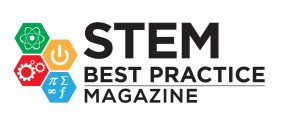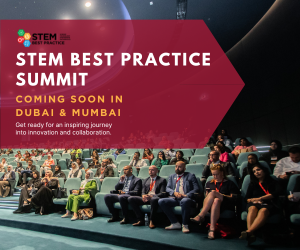Space exploration has always captured human curiosity and driven innovation. From the first moon landing to Mars rovers and beyond, we have continuously pushed the boundaries of possibility. Recently, astronaut Sunita Williams returned to Earth after nearly nine months at the ISS, reminding us not only of how far we have come but also of the dedication and resilience it takes to explore the cosmos. As we stand on the brink of even greater discoveries—like human settlements on Mars and asteroid mining—students today have more opportunities than ever to contribute to this field. Through various STEAM initiatives in our school, we are inspiring and equipping young minds with the knowledge, skills, and passion needed to make a real impact in space science.
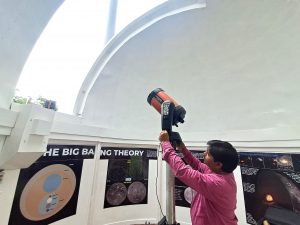
Encouraging Hands-on Learning in Astronomy
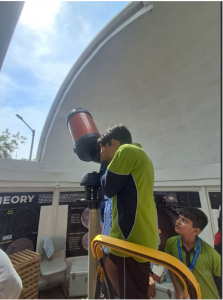 One of the best ways to spark interest in astronomy is through hands-on experiences. That is why we set up an observatory in our school, giving students a place to explore the night sky first-hand. It has become a hub for learning, where students and even parents gather for evening sky-gazing sessions, spotting planets, stars, and galaxies through telescopes. This not only deepens their love for astronomy but also sharpens their observation and data analysis skills.
One of the best ways to spark interest in astronomy is through hands-on experiences. That is why we set up an observatory in our school, giving students a place to explore the night sky first-hand. It has become a hub for learning, where students and even parents gather for evening sky-gazing sessions, spotting planets, stars, and galaxies through telescopes. This not only deepens their love for astronomy but also sharpens their observation and data analysis skills.
Our Cosmos Club, a student-led initiative, has been instrumental in making astronomy more interactive and engaging. The club organises stargazing nights, debates on space exploration, and research projects in astrophysics. It provides students a platform to discuss celestial discoveries, collaborate on investigations, and even interact with astronomers.
One of our most exciting moments was when a group of students successfully identified Jupiter’s moons during an observation session. Building on this, we have now introduced sunspot viewing as a regular activity, helping students monitor solar activity and better understand our closest star. In February, during the Planet Parade, we organised multiple sky-gazing events where students got to witness rare celestial alignments. These experiences make space science tangible and thrilling.
Participation in Global Space Research
Our students aren’t just learning about the universe; they are actively contributing to space research. As part of the International Asteroid Search Campaign, they analysed real-time astronomical data, and one student even identified an asteroid—an incredible achievement that added to our school’s growing presence in the field.
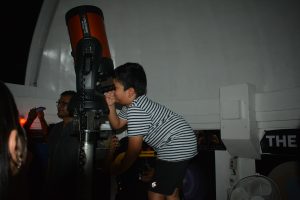 We also took part in the Space Settlement Design Competition, where our team designed a futuristic, self-sustaining habitat for humans on Mars. This pushed students to think beyond textbooks, applying knowledge of physics, biology, and engineering to real-world challenges. The students secured first place at the national level, were runners-up in the Asian round in Dubai, and are now preparing for a resubmission. If selected, they will compete at the global level!
We also took part in the Space Settlement Design Competition, where our team designed a futuristic, self-sustaining habitat for humans on Mars. This pushed students to think beyond textbooks, applying knowledge of physics, biology, and engineering to real-world challenges. The students secured first place at the national level, were runners-up in the Asian round in Dubai, and are now preparing for a resubmission. If selected, they will compete at the global level!
Collaboration with Leading Institutions
Working with experts and institutions has given our students invaluable exposure to the real-world applications of space science. During our visit to the Shiv Nadar University Physics Lab, students got hands-on experience with spectroscopy, cosmic ray detection, and radio astronomy—deepening their understanding of scientific instruments used in space research.
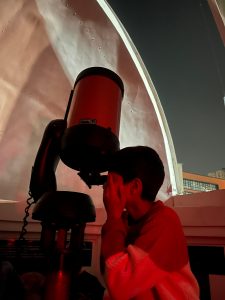 We also collaborated with the Inter-University Centre for Astronomy and Astrophysics (IUCAA) for a Telescope-Making Workshop, where students and teachers built functional telescopes from scratch. One of our students summed it up perfectly: “It was fascinating to learn how a few carefully arranged lenses could open up a whole new universe for observation.” These partnerships help bridge the gap between classroom learning and professional scientific research, inspiring many to consider careers in astronomy and aerospace engineering.
We also collaborated with the Inter-University Centre for Astronomy and Astrophysics (IUCAA) for a Telescope-Making Workshop, where students and teachers built functional telescopes from scratch. One of our students summed it up perfectly: “It was fascinating to learn how a few carefully arranged lenses could open up a whole new universe for observation.” These partnerships help bridge the gap between classroom learning and professional scientific research, inspiring many to consider careers in astronomy and aerospace engineering.
Women in STEAM: Breaking Barriers in Space Science
Space science has historically been a male-dominated field, but our students are determined to change that. At the Physics Conclave at VidyaGyan School, our students secured second prize for their paper on “Women in STEAM,” highlighting the ground-breaking contributions of female scientists in space exploration. One of our students, passionate about gender inclusivity, shared, “This experience motivated me to pursue physics and prove that the universe belongs to everyone.”
By encouraging more young girls to participate in such workshops, competitions, and research projects, we are working towards a future where the space industry is truly diverse and inclusive.
The Road Ahead: From Classrooms to the Cosmos
The future of space exploration is full of possibilities, and our students are ready to lead the way. With more opportunities for hands-on learning, international competitions, and collaborations with top scientific institutions, they are proving that age is no barrier to making meaningful contributions in the field of astronomy.
To strengthen our STEAM initiatives further, we are planning:
- Advanced Astronomy Workshops – Experts will cover topics like exoplanet detection, black hole imaging, and space mission simulations.
- Cosmos Club Expansion – The student-led club will host more interactive sessions with astronomers, space-themed debates, and research projects in astrophysics.
- Meteor Shower Observation Camps – Overnight observation events to study meteor showers and link astronomy with Earth sciences.
- Collaboration with Space Agencies – We are exploring partnerships with ISRO’s outreach programs for greater exposure to space science and technology.
- Astrophotography Workshop – With trained teachers guiding the way, students will learn to capture stunning images of celestial objects, making space science even more exciting.
By nurturing curiosity, fostering innovation, and providing platforms for exploration, we are shaping the next generation of cosmic pioneers. Whether it’s tracking asteroids, designing futuristic space habitats, or capturing breathtaking images of the cosmos, our students are already making an impact. As they continue to push boundaries and explore new horizons, they remind us that the future of space exploration isn’t just in the hands of astronauts and scientists—it’s in the classrooms and observatories where young minds dream big and reach for the stars.
About Shiv Nadar School, Noida
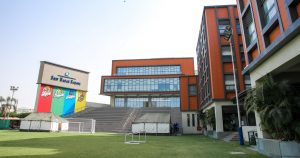
Founded by the Shiv Nadar Foundation in 2012, Shiv Nadar School is committed to redefining K-12 education through holistic development, creativity, and innovation. Guided by the motto “Education for Life,” the school moves beyond rote learning, emphasizing experiential pedagogy, technology integration, and a strong focus on sports and the arts. It nurtures well-rounded individuals who are curious, adaptable, and socially aware, shaping them into future leaders and changemakers through a value-driven, student-centric approach.
About the Author
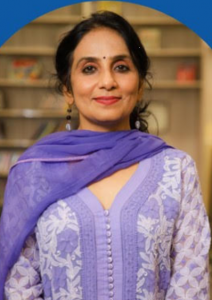 Rachna Arora is a PGT Physics educator at Shiv Nadar School, dedicated to fostering curiosity and critical thinking in students. With a deep passion for space exploration, scientific discoveries, and education, she strives to bridge complex concepts with real-world applications. Her work emphasizes making science accessible, inspiring young minds, and encouraging a spirit of inquiry.
Rachna Arora is a PGT Physics educator at Shiv Nadar School, dedicated to fostering curiosity and critical thinking in students. With a deep passion for space exploration, scientific discoveries, and education, she strives to bridge complex concepts with real-world applications. Her work emphasizes making science accessible, inspiring young minds, and encouraging a spirit of inquiry.
Rachna’s dedication extends beyond academics—she aspires to inspire a lifelong love for science, motivate students to pursue careers in STEM fields, and cultivate a mindset of curiosity and inquiry that transcends the classroom. Through her work, she continues to ignite young minds with the wonder of discovery, preparing them to be future-ready global citizens who can contribute meaningfully to society.

